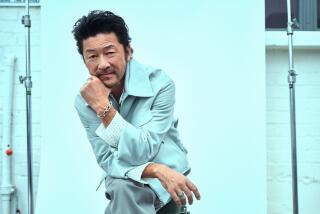Oregon’s Portland Art Museum salutes the samurai
On the battlefields of feudal Japan, the elite warriors known as samurai cut formidable figures thanks not only to their skill and training, but also to their exquisitely crafted armor.
“There’s a saying about spectacular armor,” says Maribeth Graybill, curator of Asian art at the Portland Art Museum in Oregon. “It raises the courage of the men who wear it, inspires the admiration of the people and strikes terror in the enemy’s heart.”
Such fierce and fantastical-looking combat gear is on display at the museum through Jan. 12 in a show drawn from the holdings of two Dallas-based collectors who, says Graybill, “admire the sculptural qualities and the way a great suit of armor is a stand-alone compendium of superb Japanese craftsmanship.”
CHEAT SHEET: Fall arts preview
“Samurai! Armor From the Ann and Gabriel Barbier-Mueller Collection” includes about 140 pieces from the 14th to 19th centuries. The exhibition traces samurai armor’s evolution — as the weapons of war shifted from bow and arrow to firearms — and explores its construction and design. Traditionally, says Graybill, Japanese armor makers used silk to lace together small, lacquered plates of iron or leather. (European knights favored large plates of tempered steel.)
Featured are 20 suits of armor, showpiece helmets, an array of equestrian equipment and a rare ensemble of armor and accessories belonging to a daimyo (provincial lord) from the Mori clan.
“Each of these objects is different … there is endless creativity,” says Gabriel Barbier-Mueller, a Swiss-born international real estate developer who, along with his wife, Ann, has been acquiring armor for a quarter-century. Their collection’s home — the Ann and Gabriel Barbier-Mueller Museum, Dallas — organized “Samurai!,” which debuted in Paris and came to Oregon after stops in Quebec City and Boston.
CRITICS’ PICKS: What to watch, where to go, what to eat
For Barbier-Mueller, helmets hold special allure because of “their sculptural form and inventiveness.” More than 40 are on exhibit, many adorned with emblems, horns or eye-catching superstructures.
Indeed, armor had purposes beyond protection. Graybill, the show’s host curator in Portland, says a warrior’s distinctive appearance helped him stand out amid the chaos of battle. Even after peace replaced internal strife in the early 17th century, samurai families commissioned ceremonial armor as status symbols that evoked past glories.
Today, Graybill notes, samurai have become a part of global culture. “People come here with an expectation of familiarity,” she says; however, “we take their initial notions and stereotypes and expand and complicate them in wonderful ways.”
More to Read
The biggest entertainment stories
Get our big stories about Hollywood, film, television, music, arts, culture and more right in your inbox as soon as they publish.
You may occasionally receive promotional content from the Los Angeles Times.










